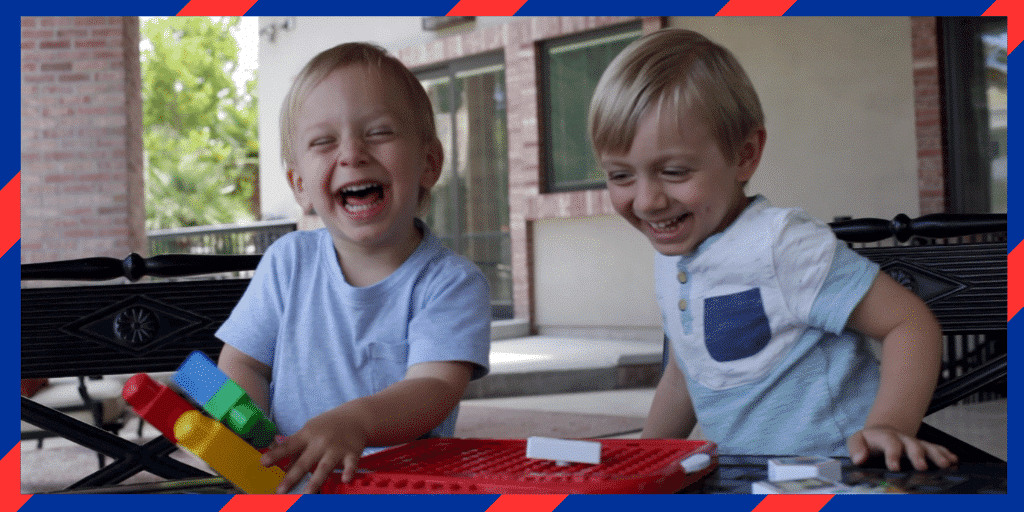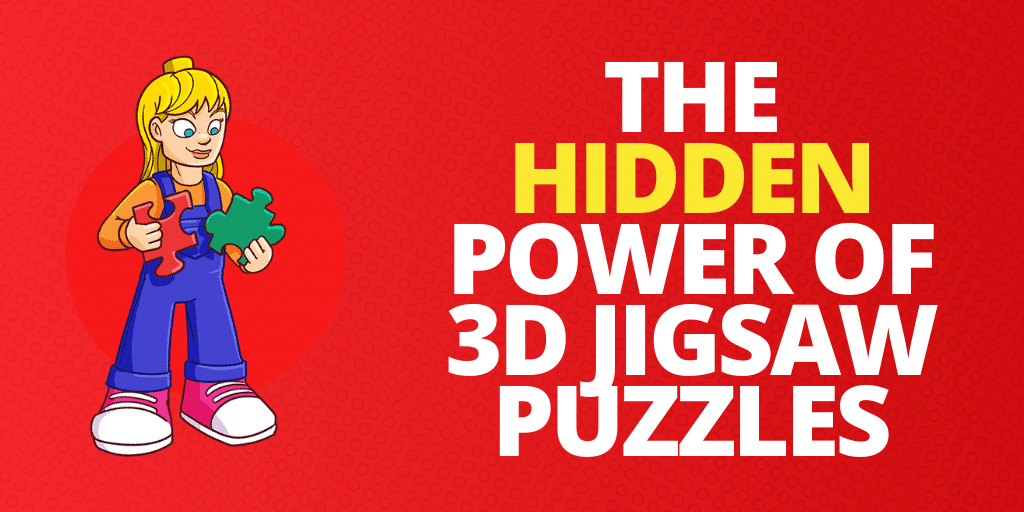The Hidden Power of 3D Jigsaw Puzzles For Kids
- 3D jigsaw puzzles for kids have so many benefits for your wallet and your child’s education. Their hidden power is being priceless. Dr. Gardner’s theory is that everyone has all eight types of intelligence at varying levels. Avoiding labels of learning style will help your child learn their strengths and work on their weaknesses in their own way without feeling inadequate and avoiding the subject. STEM-certified 3d jigsaw puzzles include multiple ways of learning in one session without it being overwhelming.
- Even if your toddler or pre-schooler isn’t reading or recognizing numbers much yet, they can benefit so much from being introduced to basic numbers and words. It’s a foundation where the earlier they learn using a STEM concept, the more prepared they are for school and more likely to enjoy it. 3d snap-in jigsaw puzzles satisfy multiple areas that your child needs to practice at this stage of life. Since it has to snap in place, they have to get it to fit perfectly and hear the click. That means they are improving their hand-eye coordination. More so, their auditory senses and then their visual senses are stimulated.
- Kids love guessing things. They are curious and like predicting what’s next. Seeing patterns helps them with predictions. This is essential in math, science, and reading. Repetition builds confidence too. Lastly and most importantly, kids love the combination of fun and developmentally appropriate challenges. 3d puzzles are a combination approach to learning and fun all in one.
3D jigsaw puzzles for kids have hidden powers. You’re probably thinking, “okay what are you trying to sell me.”
But, I’m not trying to sell you a thing.
I’m going to show you how these puzzles are priceless in terms of education and fun. That is their hidden power.
Multiple Intelligences Shape Learning

Multiple Intelligences… It sounds like Einstein’s type of intelligence. Is it?
Let’s see what the data says.
If you’re looking for a fun way to challenge your child’s critical thinking and logical thinking muscles, fine motor skills, and increase their attention span you have to try 3d jigsaw puzzles.
Three reasons moms love these 3d jigsaw puzzles for kids:
- The puzzles snap in place – You’re less likely to lose a piece which means they’ll play with it because one isn’t missing. You’re also less likely to step on puzzles and cry while wishing your child didn’t love them so much.
- Includes a baseboard for creative play – The baseboard is Lego®, Duplo®, and Mega Blo® compatible for an ideal flat surface to create a world of dinosaurs, a spaceship, or a garden.
- 3d jigsaw puzzles encourage advancement in learning at home – They support your child’s 8 methods of intelligence and promote learning through play using a STEM approach.
3d puzzles for kids feed their curiosity, drive to win, challenge them, and allow them to have fun the entire time.
It caters to multiple areas of learning. All of us learn multiple ways. You might think you learn the best reading and that is true, but for different subjects, you may learn better hands-on in combination with reading.
That’s what multiple intelligence is all about.
In fact, there isn’t a one size fits all approach which is the best part.
That’s where STEM education comes into play.
Let me walk you through this concept and how it will change the game for you and your little one.
Kids learn through various methods like sight, touch, hearing and so forth. Even though they may absorb information best through one approach for one subject, it doesn’t mean they’ll learn best using that same method for another.
Multiple intelligence is the idea that there is a single intelligence we are born with that can be measured. Using IQ tests to measure is one example.
There are 8 different types and we’re born with all of them.
This is basically shaped by genetic and environmental factors such as upbringing and exposure to adequate support and education at a young age.
Here are the eight types defined by Dr. Gardner:
Spatial: The ability to visualize, create, and manipulate something in a space, such as what an airplane pilot or architect or chess player may do.
Bodily/Kinesthetic: This type of intelligence has to do with using one’s gross motor skills or fine motor skills to express oneself or to create, learn, or solve problems; involves coordination and dexterity and the use of one’s whole body or parts of the body such as the hands.
Musical: The ability to express oneself and understand and create through music—by singing, playing musical instruments, composing, conducting, etc. Involves musical abilities such as sensitivity to rhythm, pitch, tone, timbre.
Linguistic: Having the ability to be attuned to the meaning of words and the sound, rhythms, inflections, and meter of words, the way a poet might. May involve reading, writing, speaking, an affinity for foreign languages.
Mathematical/Logical: The ability to understand and recognize the patterns and relationships between numbers and actions or symbols, possessing computing skills, having the ability to solve various problems through logic.
Interpersonal: Sometimes referred to as social intelligence, interpersonal intelligence refers to the ability to be attuned to other people’s feelings, emotions, and temperament. Individuals with high interpersonal intelligence tend to be good at communicating with and understanding other people and are good at working with others.
Intrapersonal: Awareness of one’s own feelings, thoughts, anxieties, and traits, and the ability to use that understanding of oneself to control one’s own impulses and behavior and make plans and decisions.
Naturalistic: The ability to understand nature—plants, animals, the environment, etc.—and identify, observe, categorize, and understand them and their distinguishing features. This intelligence helps us use elements and patterns in the natural world to create products or solve problems.

An important note on this is to not confuse this with learning styles.
What Dr. Gardner means by his theory is that everyone has all eight types of intelligence at varying levels.
Avoiding labels of learning style will help your child learn their strengths and work on their weaknesses in their own way without feeling inadequate and avoiding the subject.
Once they feel like they can’t do something right, they’re more likely to abandon the STEM toy and “hate” it before even giving it a true chance.
That’s why it’s extremely important to buy them a 3d jigsaw puzzle that is at the same level as your child in terms of age AND milestone.
Did you know…
By supporting them throughout their educational journey at a young age ( as young as a baby), they are less likely to give up on math and science so soon. Later on, they’re more likely to do very well because of proper support at home.
The best way to support your child is to guide them through those challenges as they work on STEM-friendly toys like the 3d jigsaw puzzles.
Now that you’ve read this far, you’re probably wondering what the heck does this concept have to do with jigsaw puzzles.
Well, jigsaw puzzles are one of the STEM-friendly ones that include multiple ways of learning in one session.
If you’re thinking it’s overwhelming for a child to have so many options, that’s not exactly how this works.
In fact, this style of learning helps children connect concepts and subjects for a thorough learning experience rather than learning one subject at a time and having trouble connecting the dots.
It’s real learning through play, not memorizing and forgetting later.
STEM-based education and the multiple intelligence theory support each other.
Research shows that multiple intelligence theory:
- Providing students with multiple ways to access content improves learning (Hattie, 2011).
- Providing students with multiple ways to demonstrate knowledge and skills increases engagement and learning and provides teachers with a more accurate understanding of students’ knowledge and skills (Darling-Hammond, 2010).
- Instruction should be informed as much as possible by detailed knowledge about students’ specific strengths, needs, and areas for growth (Tomlinson, 2014).
Research shows that STEM:
- Active learning is more durable and lasting when students are cognitively engaged in the learning process. Long-term retention, understanding, and transfer is the result of mental work. Children who construct meaningful relationships between ideas rather than encouraging a passive recording of information.
- Students with ADHD and other similar issues are able to complete long, intricate tasks because it’s hands-on that require creative thinking.
- STEM allows your child to connect their learning in critical areas together. It can be cross-contextual learning too.
Now that you understand this style of education, here’s why kids love it even more!
Why Kids Love 3D Jigsaw Puzzles

Even if your little one isn’t at the stage of recognizing many letters or numbers yet, they can benefit so much from being introduced to basic numbers and words.
It’s a foundation where the earlier they learn using a STEM concept, the more prepared they are for school.
Did you know that jigsaw puzzles have been around since the 1700s? It has evolved from hand-cut wooden educational tools to STEM-certified puzzles with multiple uses.
This puzzle helps them practice putting together numbers in numerical order. They LOVE this because it’s more challenging than most puzzles.
The key is that they don’t see it as work. They don’t find it overwhelming. It’s developmentally appropriate and the challenge is exciting.
And I’m not stopping there.
It satisfies multiple areas that your child needs to practice at this stage in life.
Since it has to snap in place, they have to get it to fit perfectly and hear the click. That means they are improving their hand-eye coordination.
More so, their auditory senses and then their visual senses are stimulated.
Oh and guess what, I’m just getting started on how kids will have the most important benefits from STEM-certified 3d jigsaw puzzles.
It also helps them strengthen their large muscles in their arms while practicing their fine motor skills in their hands and fingers.
They have now used multiple areas of learning and they feel like they’ve accomplished something incredible as they have worked various parts of their body.
Even more, the neurotransmitter dopamine is produced as they play.
It helps you improve your motor skills, increases your concentration power, optimism, confidence, and enhances recollection due.
The effect makes it one of the most positive experiences with something that is mom and research approved.
These become their favorite go-to.
Your little one loves these puzzles because it boosts their memory and concentration.
It helps them improve focus for long hours which of course is an amazing asset for life in general.
Stick with me here, I know it sounds like something a mom would like.
When we act excited or surprised that they remembered something so small that seemed insignificant this is positive reinforcement.
However, since their memory is improving, careful what you say or promise! These kids are getting to smart for us!
As I was reading Highlight magazine, I found a great article by Dr. Schwager and he had a good point.
Kids love pointing out differences. It’s a basic cognitive ability too. When kids recognize the 3d jigsaw puzzle piece is too big or small, they’re now challenged to pay more attention to detail.
This helps them develop better reading skills.
Here’s why.
It’s common for kids to have difficulty recognizing the subtle difference between “b” and “d” as they learn how to read and spell. As they learn how to pay attention to subtle differences in puzzle pieces, this helps with attention to detail.
Guess what?!
Kids love guessing things too! They are curious and like predicting what’s next. Seeing patterns helps them with predictions. This is essential in math, science, and reading.
Lastly and most importantly, kids love the combination of fun and developmentally appropriate challenges.
If you’re not sure if your child will like a 3d jigsaw puzzle, pick one out that has a picture of something they like.
Whether it’s farm animals or sea and forest animals for example.
Did you enjoy reading this helpful blog? Sharing it on Facebook or Twitter is the best compliment!




